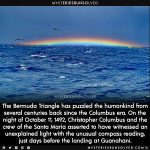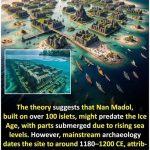Where Two Oceans Meet: The Stunning Boundary Between Waters 🌊💙🌍

Where Two Oceans Meet: The Stunning Boundary Between Waters 🌊💙🌍

This breathtaking image captures a natural wonder that has fascinated scientists and travelers alike — the striking line where two bodies of water meet but don’t seem to mix. 💫
While the post claims this is where the Atlantic and Pacific Oceans meet, the real phenomenon occurs in several places around the world — most famously near Cape Horn, the Gulf of Alaska, and the meeting of the Atlantic and Indian Oceans near South Africa 🌎.
The visible “border” between the waters isn’t a wall, but rather a halocline — a natural boundary caused by differences in salinity, temperature, and density between two bodies of water. These variations affect how light is reflected, making one side appear deep blue and the other green or brownish. Because the two water masses have distinct chemical and physical properties, they mix very slowly, creating a temporary visual divide that looks like a seam across the ocean 🌊✨.
In the Gulf of Alaska, for example, glacial meltwater (rich with sediments and minerals) meets saltier ocean water, forming a visible contrast. The same principle applies to rivers meeting the sea — like the Rio Negro and Amazon River, where blackwater and brownwater flow side by side for miles before blending together 🌿💧.
So while the photo doesn’t show the exact border between the Atlantic and Pacific, it beautifully illustrates one of Earth’s most mesmerizing natural phenomena — where science meets magic, and the oceans remind us just how alive and dynamic our planet truly is 🌏💙.
#OceanMysteries #NatureWonders #AtlanticMeetsPacific #Halocline #EarthPhenomena #ScienceFacts #UnbelievableNature #BeautifulPlanet #WaterWorld











